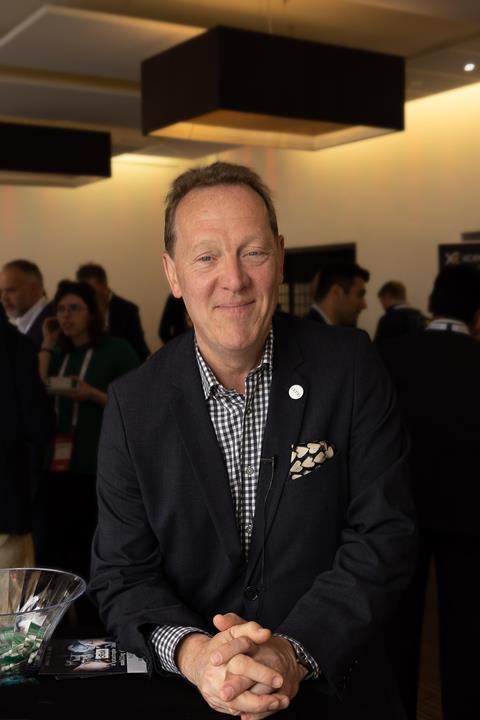Open modelling is about more than individual loss events, it’s about global capacity building and risk understanding, writes Dickie Whitaker, CEO, Oasis Loss Modelling Framework.
The (re)insurance industry faces global challenges that are fundamentally reshaping risk assessment and management. From wildfires and Severe Convective Storms (SCS) to systemic cyber and technology incidents, peak perils are evolving in both severity and frequency.

The increasing volatility from climate-related events, compounded by growing non-natural catastrophe threats, is putting strain not only on capital adequacy but also on the tools we use to model and manage risk.
As systemic risks multiply, from intensifying climate events to widening insurance protection gaps, the way we model and manage those risks must evolve.
For decades, catastrophe models were the preserve of a few vendors, deployed primarily in developed markets. But this traditional landscape is no longer sufficient. It lacks transparency, local adaptability, and, critically, accessibility.
The shift towards open-source catastrophe modelling platforms is about more than just lowering costs. It’s about dismantling technical and institutional barriers that prevent insurers, governments, and communities from understanding and owning their risk.
A Strategic Imperative
Catastrophe modelling has become essential for underwriters, brokers, and investors, enabling evaluations of potential losses from natural disasters and other extreme events.
In a competitive and rapidly changing market, accurate modelling and effective exposure management are increasingly viewed as value-accretive and critical differentiators - driving superior underwriting returns, enabling cost savings, and protecting brand value.
For C-suites and boards, these tools are strategic imperatives, directly influencing investor confidence and profitability.
The perception of cat modelling and exposure management within the market varies, but its growing importance is clear.
Regulatory bodies, rating agencies, and investors are all sharpening their focus. Institutions that model and manage exposure effectively are often rewarded with better ratings and enhanced permissions to write more business.
Simultaneously, national regulators are embedding climate-related stress testing and risk disclosures into policy, elevating the need for robust and transparent modelling platforms that can adapt to both global standards and local realities.
One recent example underscores this shift. Following the severe hailstorms in France in 2022 - the country’s most expensive insured weather loss in over two decades - a bespoke hail model was rapidly developed using the Oasis Loss Modelling Framework.
Built by Insurance Partners Europe and licensed initially by Generali, the model combined locally calibrated vulnerability data, high-resolution exposure mapping, and flexible assumptions to deliver far more accurate risk assessments than standard market offerings.
Critically, the open architecture enabled fast deployment and refinement in-country, an important differentiator for both primary carriers and reinsurers managing European weather volatility.
But open modelling is about more than individual loss events. It’s about global capacity building and risk understanding. That’s where our collaborations with partners like the Insurance Development Forum’s Risk Modelling Steering Group are critical. Together, we’ve developed a suite of open, public-good tools designed specifically to increase disaster risk understanding and financing capacity in vulnerable markets.
Examples include:
- The Oasis Scenario Modelling Tool: An interactive platform that combines hazard footprints, a library of vulnerability curves, and standard catastrophe modelling processes to support decision-making and education.
- The Benefit-Cost Assessment Tool: A vital component for climate adaptation planning, it quantifies the ROI of flood resilience investments using Oasis LMF’s engine.
- The Risk Explorer Tool: Developed with Maximum Information, this tool demystifies parametric insurance design, particularly for emerging schemes in Africa, Asia, and Latin America.
- Oasis Open Access Model Library: Fully open and peer-reviewed catastrophe models now include the UCL Indonesia Tsunami model, the Oasis Bangladesh Cyclone model, and the Dominican Republic Earthquake model, developed with the GEM Foundation.
These tools are not academic curiosities - they’re in active use. From modelling drought exposure in South Africa to supporting coral reef insurance in Central America to underpinning sovereign risk planning in the Pacific Islands, open models are enabling more inclusive and locally informed decision-making.
To scale these benefits, interoperability is essential. Shared data standards and open APIs allow tools and models to work across contexts, whether you’re in Zurich, Nairobi, or Jakarta. That’s why Oasis has aligned closely with international standards bodies, ensuring that outputs are consistent with existing workflows and reinsurer systems. It’s also why the Oasis engine remains modular and open-license, so others can build on it, rather than starting from scratch.
Closing the Capacity Gap
Ultimately, the protection gap is not just about capital, it’s about capability. Open-source modelling creates a path to greater local ownership, better-informed underwriting, and more equitable risk finance solutions.
For the reinsurance sector, it opens new conversations with cedants, facilitates regulatory engagement, and enhances the credibility of climate adaptation funding.
The same principles that make open models powerful for flood, cyclone, hail or earthquake risk - transparency, adaptability, and scalability - are now being applied to cyber risk and even AI-driven systemic threats.
These emerging risks are inherently global and fast-changing, making them ideal candidates for collaborative, open-access modelling approaches that allow rapid iteration and shared learning.
Looking Ahead
The opportunity now is to move from a handful of pilots to global adoption.
In 2025 and 2026, we expect to see open-source models deployed at scale globally. Cyber, AI, geopolitical volatility, and digital infrastructure fragility are all on the horizon. More countries.
More perils. More collaboration. Watch this space.










No comments yet